In southeast Louisiana we live in a world of bald cypress, Taxodium distichum, to the point where they can be seen simply by looking outside our windows. Our state tree can be found in wood lines, riverbanks, planted landscapes, service ditches, bayous along the highway, and everywhere in between. For those who practice bonsai, this would be a haven for collecting bald cypress. However, diggable material is not as available as one would assume.
Areas with dense older stands of bald cypress that have inspiring “buttressed” bases and painteresque landscapes of exposed roots with knees rarely have trees amongst them that are accessible. Bald cypresses are protecteed trees in most regions of Louisiana. It would be a sin and against the law to collect them in national parks. Hefty fines can be handed to those who collect on government properties without permission. Your best bet for collecting native material would be from privately owned areas. This is more a disclaimer of ethics, and it is highly recommended that you only collect with permission. Once you have permission, make sure bald cypress are abundant in the area.
The ideal environment for collecting bald cypress is just beyond the bottomland hardwoods. This is where a noticeable break between swamp maple, Acer rubrum var. drummondii, and invasive tallow trees, Triadica sebifera, can be seen. Cypress colonize in freshwater flood plains where water moves freely between estuaries. Forest habits usually differ between a few different settings depending on the history of the land or property. The most common ones that can be discovered are the remnants of milled forest by early settlers (1600’s – 1800’s) or the beginnings of new flood plains caused by coastal erosion. These are also the easiest areas to find accessible young bald cypress roughly three to five years old. If the colony of trees are thriving, the growth rate can be quite rapid with some younger trees achieving 24” or more per year in height. Trunk girth on younger trees like this are in the 2.5”-7” dimeter range.
It should be stressed that young bald cypress like this should be our target for collection and anything over 6”-7” in diameter will either be too large or would be better off left alone. Leaving bald cypress to reach maturity to be able to produce seed would be ideal even if the species is one of least concern according to the Red List, species that would be considered for threat of extinction. As bonsai practitioners we should act more as conservationists of bald cypress and do our best to represent the species in bonsai by giving them dignity and respect.
One of the challenges in instructing bonsai practitioners that are green to collecting bald cypress in an ideal environment is encouraging them to only collect one tree. There’s an adrenaline rush that those who are invested in bonsai experience during a yamadori, wild tree collecting, excursion that is hard to explain. Allowing your imagination to run wild with all the possibilities with each bald cypress that is spotted and then onto the next. Bonsai is an art of time and age so what needs to be kept in mind before digging is the time that will need to be invested into each given tree. Pulling trees should be more of a need for a good possible bonsai not the want to have as many as possible. “Need” is even a strong word and feeling when it comes to bonsai, but more on this philosophy later. One can have too many bald cypress bonsai and that realization comes later during repotting seasons.
Traits of collectible bald cypress:
-Buttressing, flaring, or muscling on all sides with no flat sections
-Noticeable taper within at least the first 10” of most trees
-Even rootage on all sides of the trunk
-Any type of subtle movement in the trunk line (if you want a potential formal upright look for straighter trunks)
That’s about it for features because we’re going to be regrowing the branches on any collected tree. There are very rare cases where a true dwarf bald cypress can be found with valuable branches low on the trunk. In most cases these trees are in national parks or in “pigmy” bald cypress swamplands. According to Mary Madison, she had a few locations with true dwarf pond cypress, Taxodium ascendens. These trees have shown up in bonsai circles and with a little bit of research examples can be found.
The following is a photo series of a yamadori excursion that was led by me and Dawn Koetting in Thibodaux, Louisiana:
Photography by Jessica Broom,
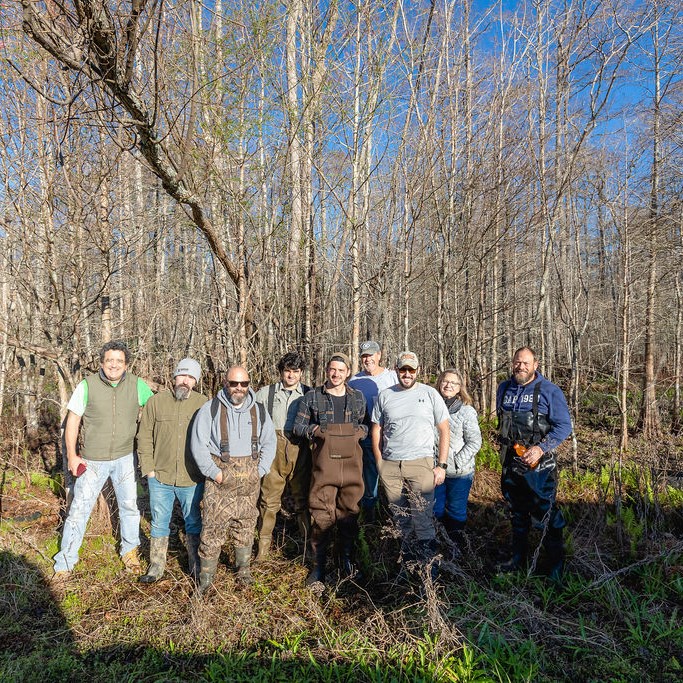
The collection team ready to go! From left to right: Bill Butler, Josh Broom, Justin Theriot, Colin Van Hook, Evan Pardue, Donald Koetting, Joel Jenkins, Dawn Koetting, Mike Jennings
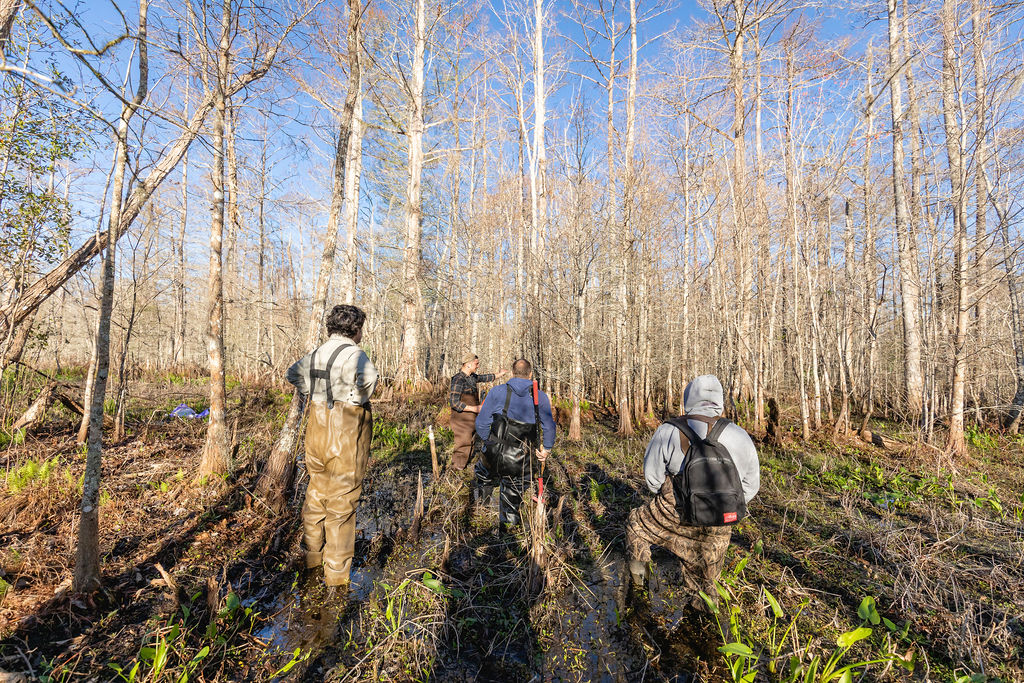
Venturing into the swamps and instructing on what qualities to seek out in bald cypress.
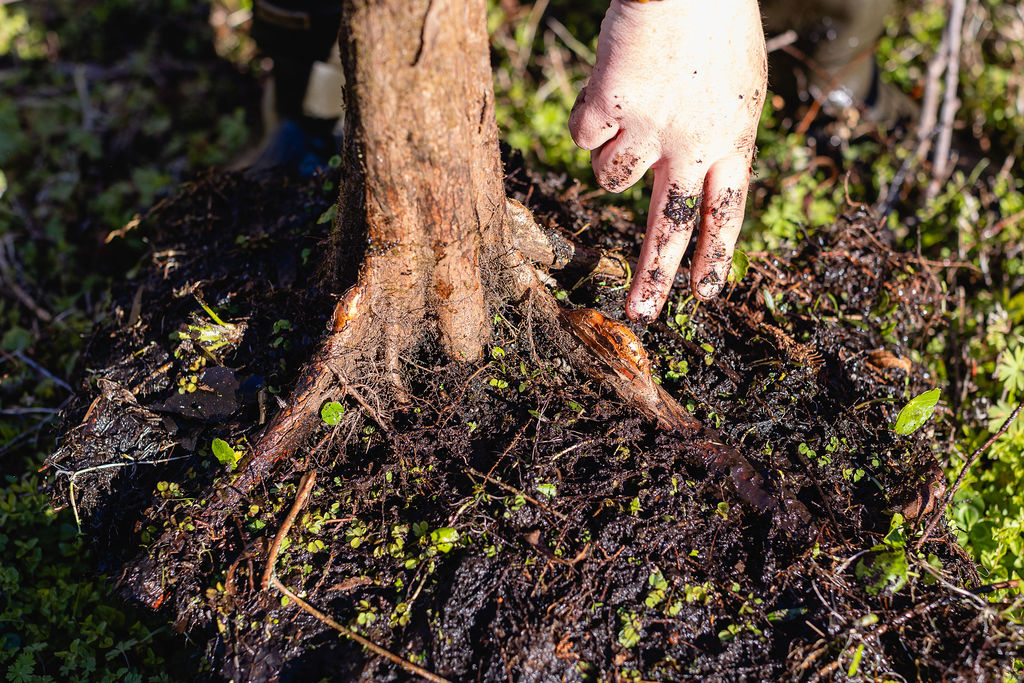
Inspecting the beginning of a knee growing directly off a surface root on a young cypress. If you look closely you can see other knees forming closer to the trunk. This is great character, especially on such a small tree.
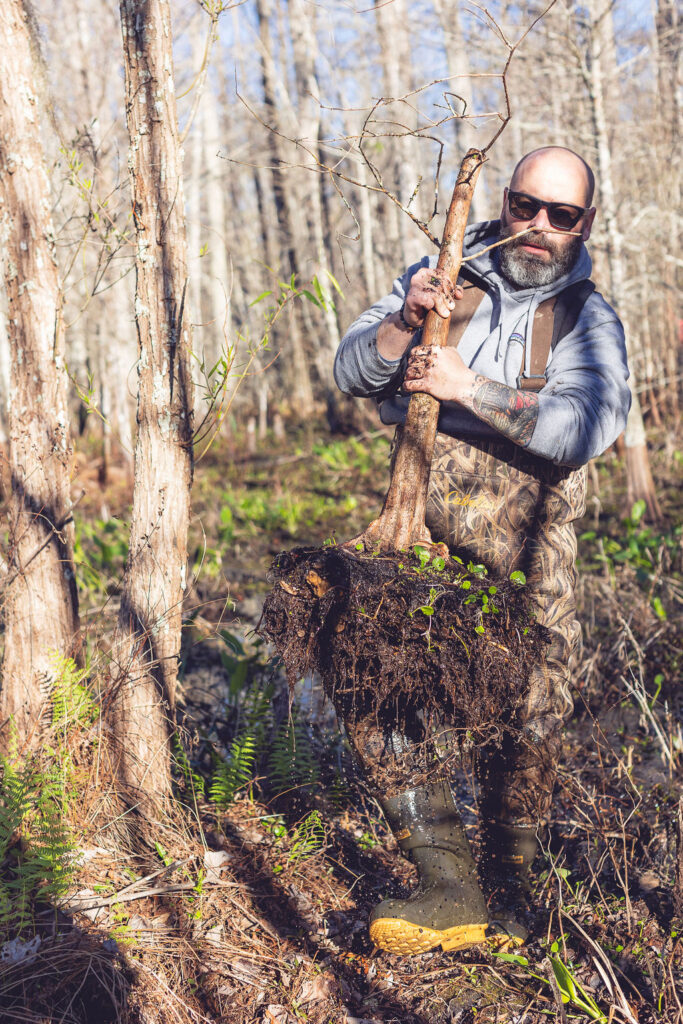
Same tree as pictured above. A near perfect collection by Justin. Lots of beautiful roots, that will ensure recovery post collection, can be seen here. Even though it is a smaller tree it has great potential to become bonsai. Trunk was roughly 3.5″ in diameter and had lovely surface roots all the way around the base.
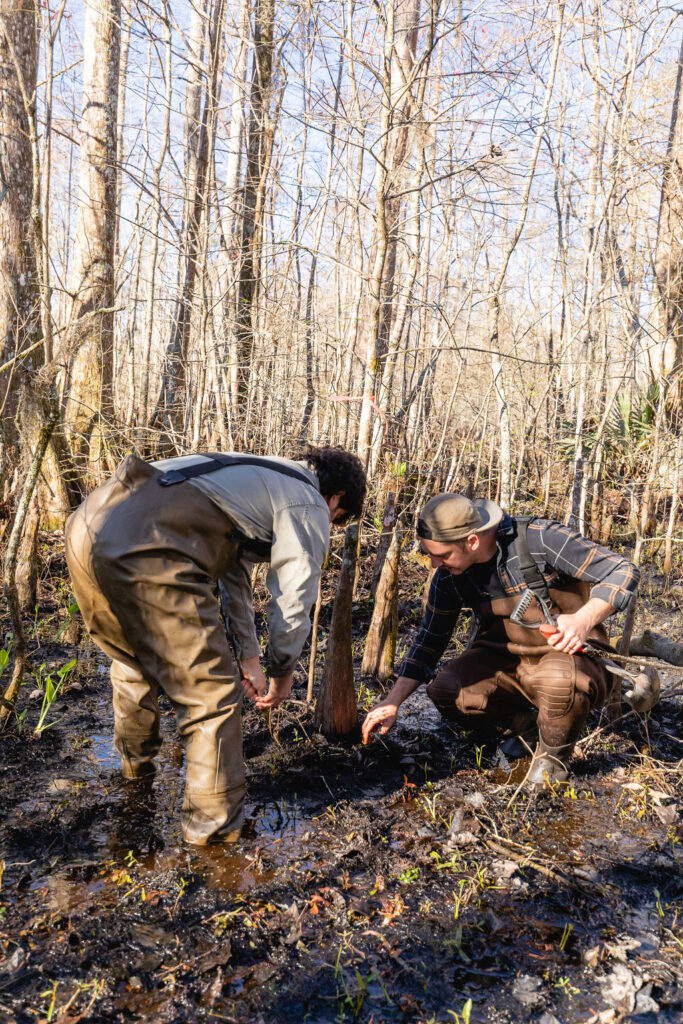
Colin inspecting his potential big tree for the day. We all wore chest waders even if it did look a little like overkill for multiple reasons. For one, it was pretty chilly and getting wet would be miserable. Secondly, there is not much firm ground at this site so falling down would also result in unhappiness. There was a few points where you could step and go up to the waist in chilly water.
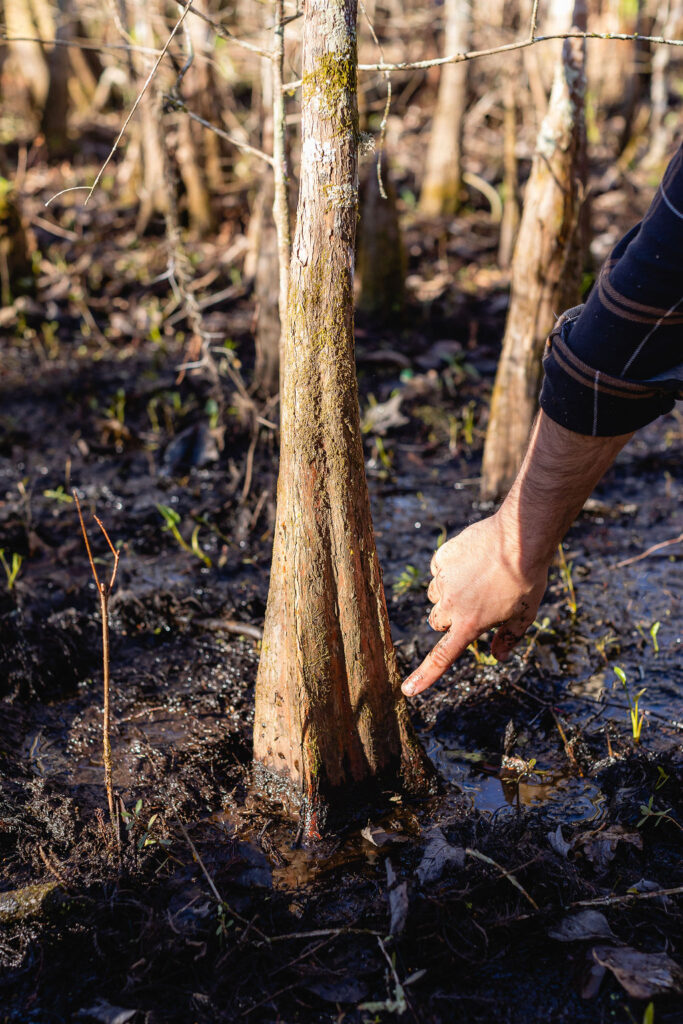
Although there is not a lot of tapering in this tree it still has lovely muscling. There is a big difference between flaring buttressing and muscling. A tree with good flaring will be seen a little later on.
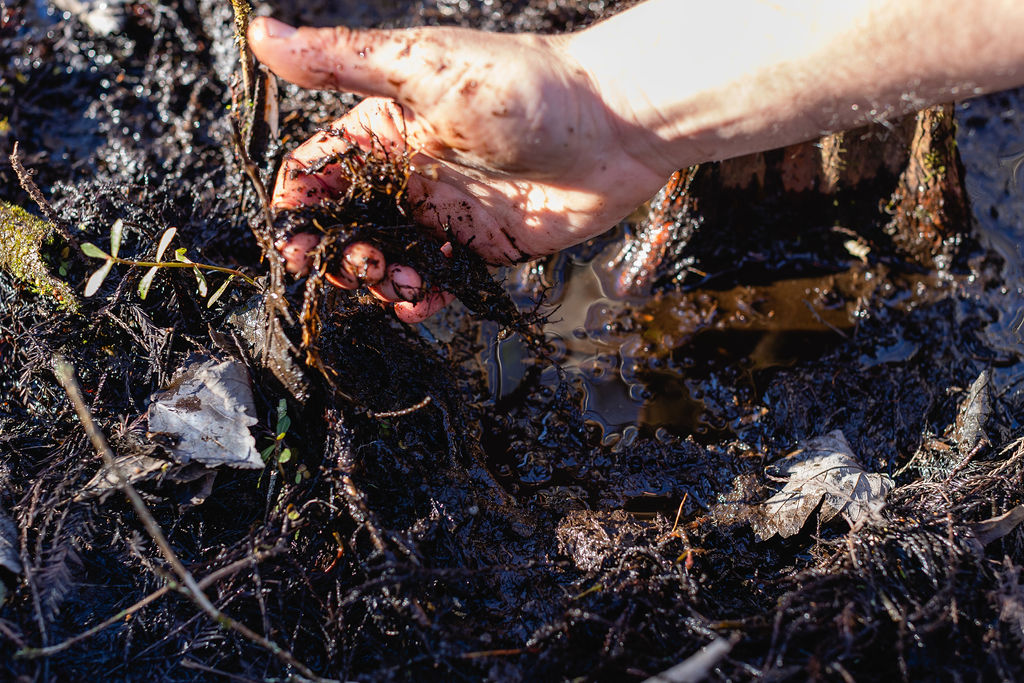
An example of just how close fibrous roots can be found on cypress growing in ideal circumstances. The water was a little oily here, not entirely sure why. All the trees collected in these standing water areas will have very ideal root systems. It’s rare to have such ease in collecting yamadori. For example, collecting winged elm, Ulmus alata, in drier areas present the challenges of deep running roots. Sometimes surface roots on elms in these locations can be misleading. Roots could be nonexistent on parts of the trunk and come spoke shaped on most trees. With bald cypress this won’t the issue most of the time.
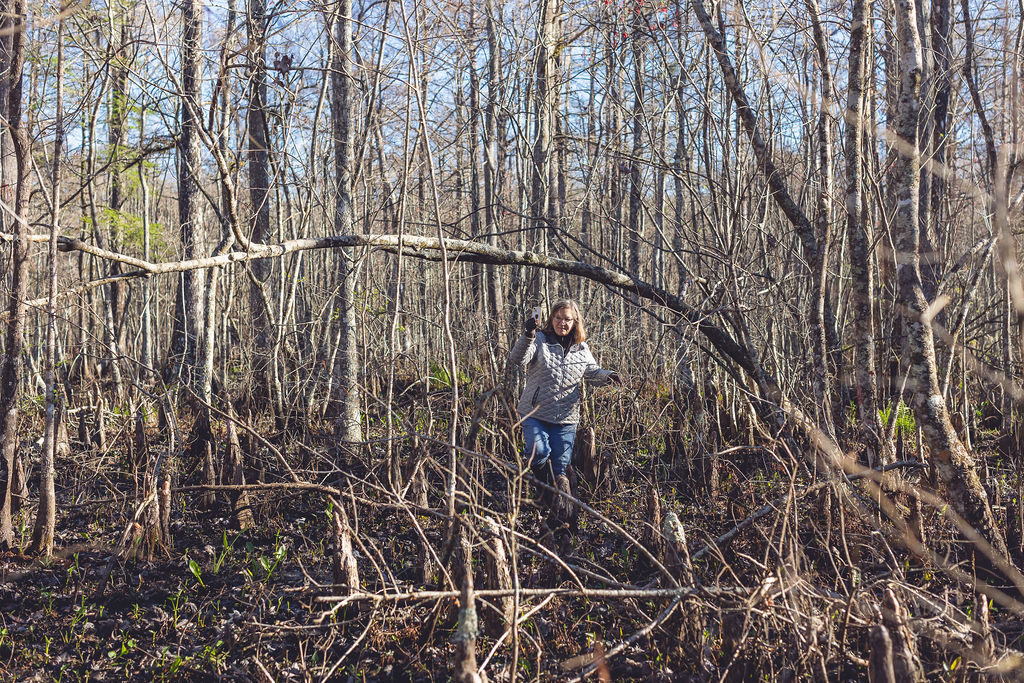
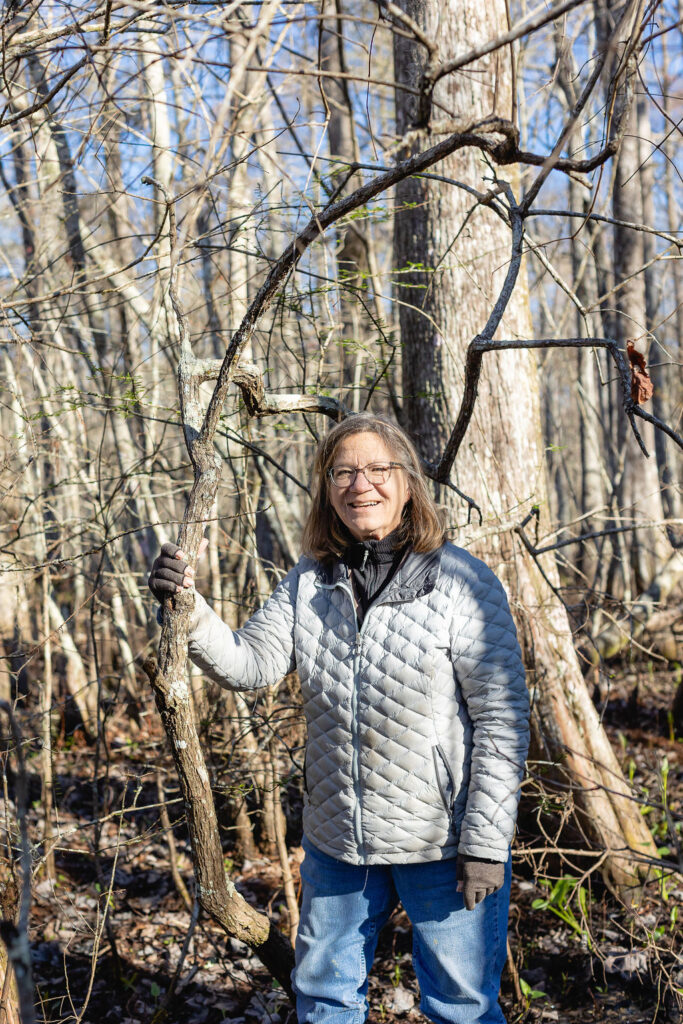
A Dawn we spotted thriving in her natural habitat.
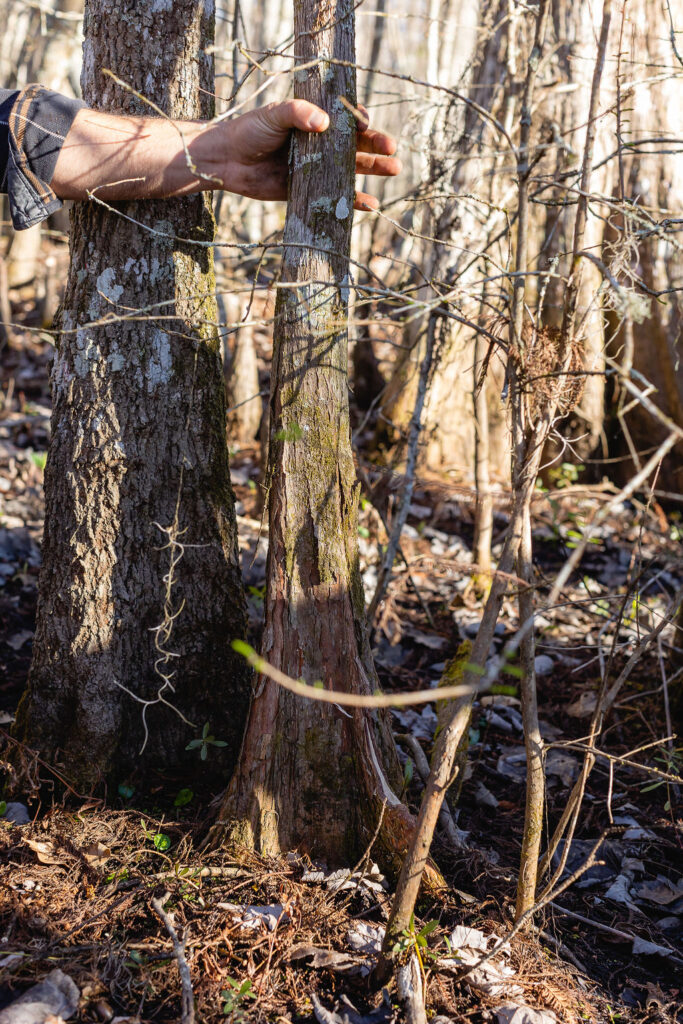
A cypress that has beautiful taper and flare but is growing really close in proximity to a larger tree. This is where ratchet straps and come-alongs come in handy.

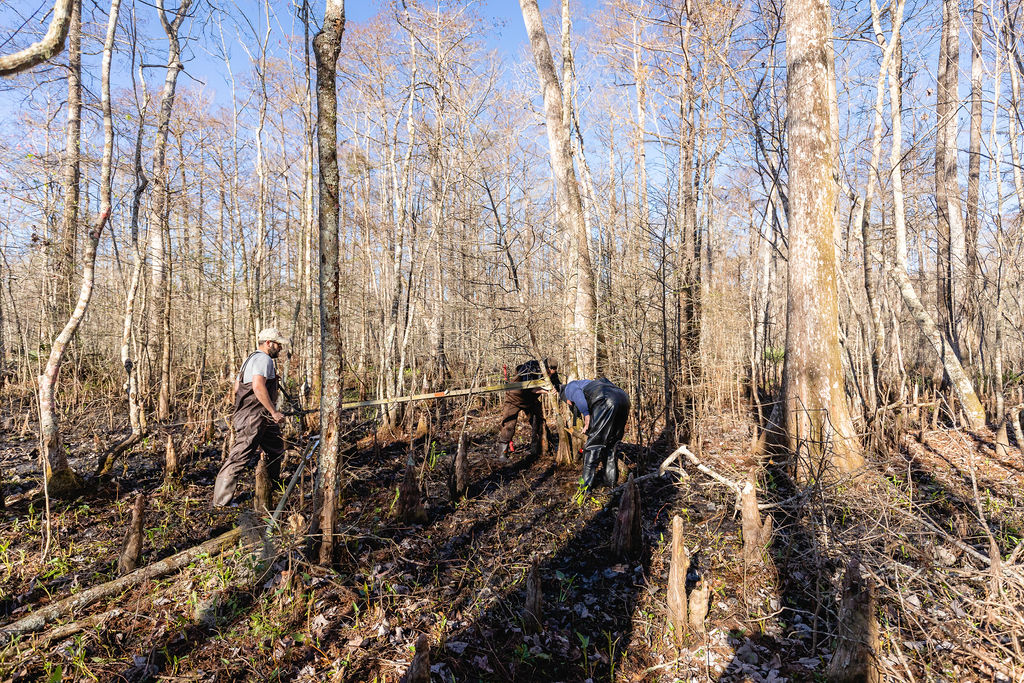
It can be seen from the first picture to the second above that a lot of tension is needed to make the root system more accessible. The come-along is also used at other angles to lift one end and put tension on the next set of roots that need to be severed.
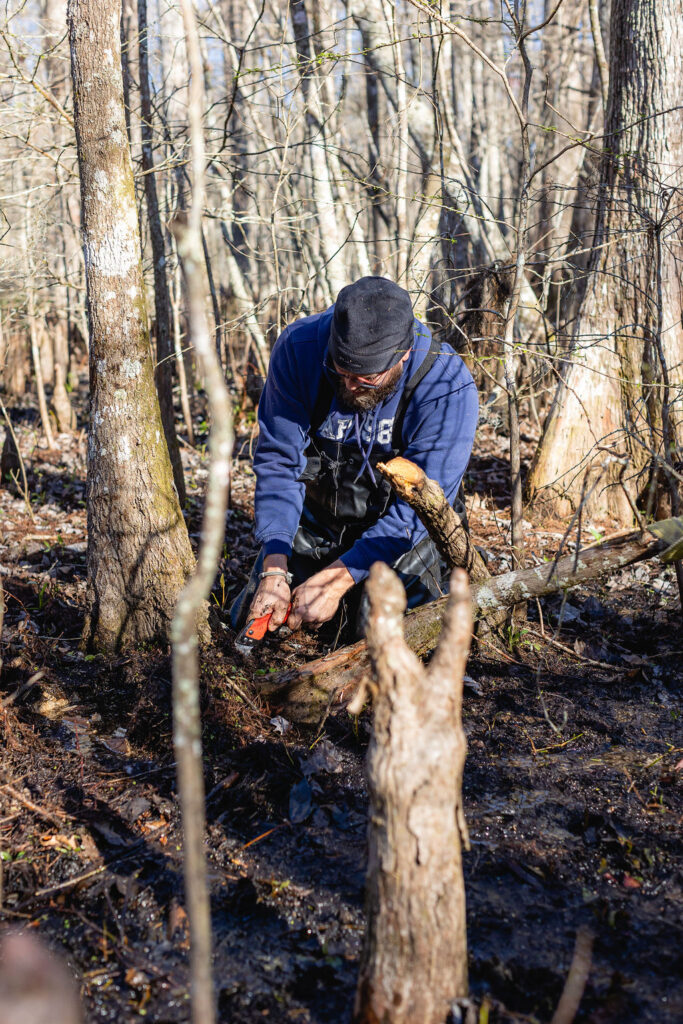
Now comes the toughest part of collecting larger bald cypress, cutting the tap roots. This is best done with a long branch saw, 18″ in this case, to get completely underneath the tree.
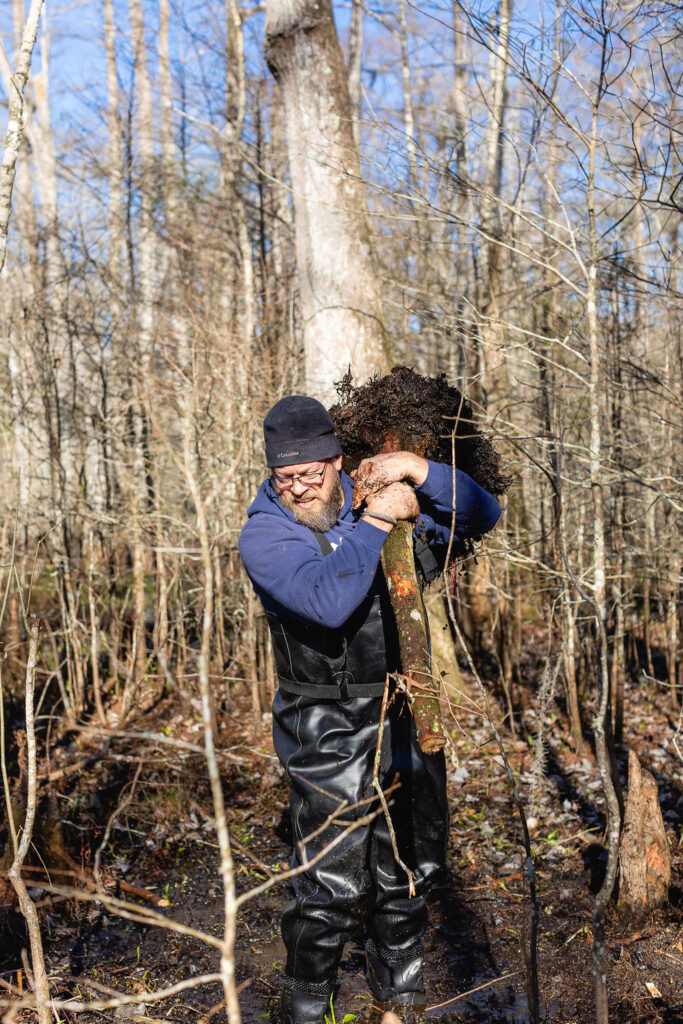
The face of exhaustion in addition to holding onto his prize for dear life. It is best to shoulder trees out and lift with your knees. Bald cypress pun intended.
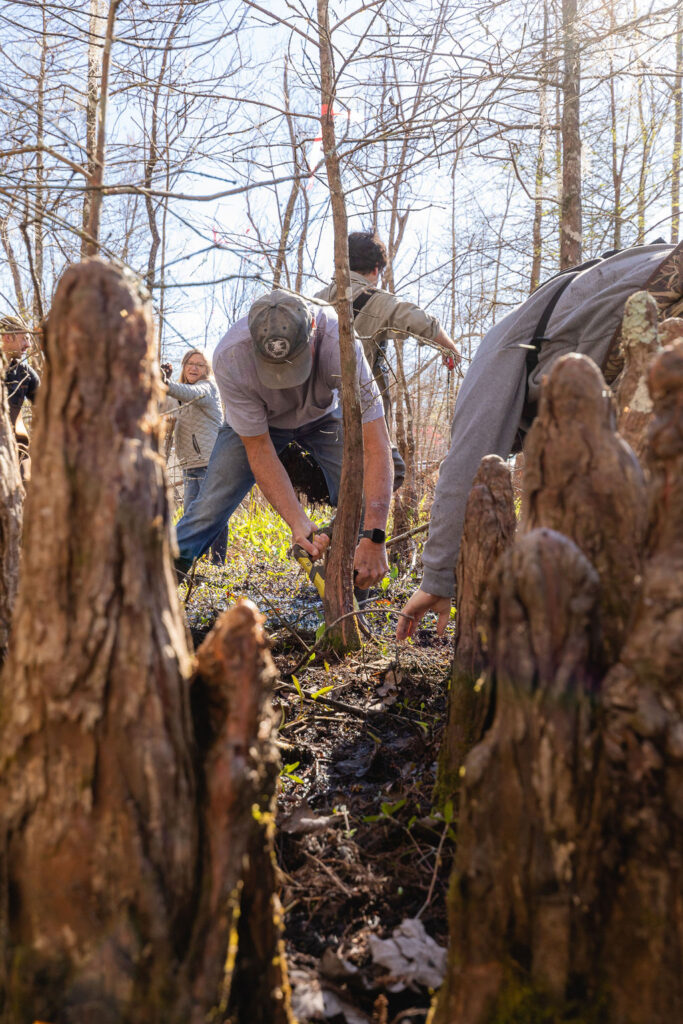
Cool shot from between two cypress knees. Looks like a flurry of activity is occurring here, it is more like a collection celebration. See, bonsai can be fun given the right energy!
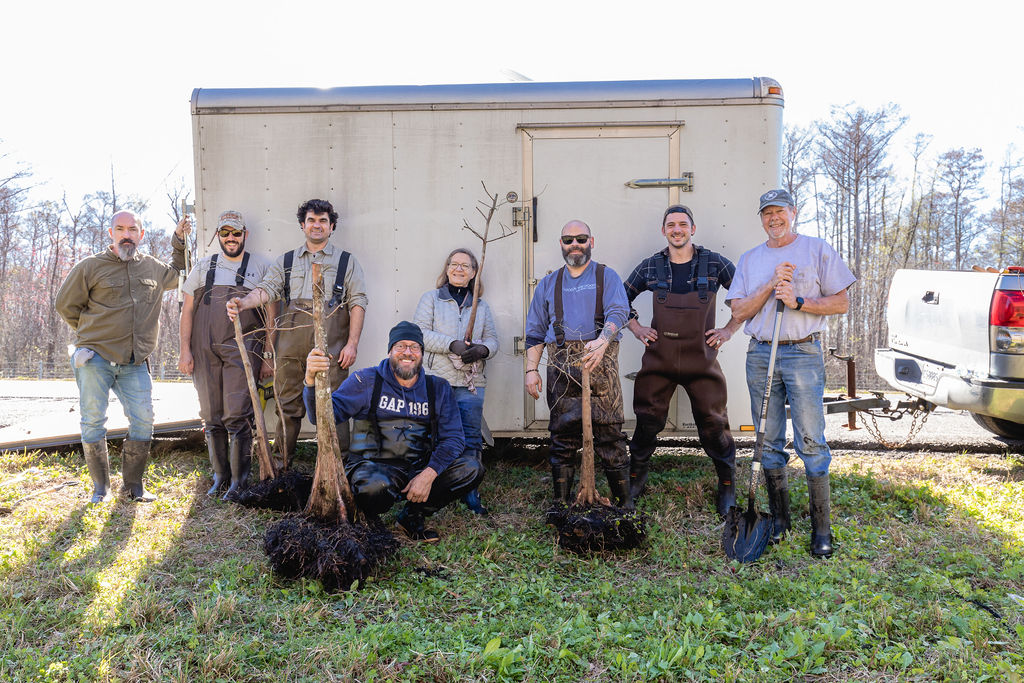
The collecting crew after the party. Who would have known that this many people would be excited to take pictures with collected bald cypresses. Josh is stoic and appears unimpressed but insisted that this is his happy face.
It was a beautiful day out and we got a lot done but a little too much for just one post. I will be following up this post with another to show the potting process and some shots of Dawn’s amazing collection of bonsai.
A very special thanks to the Koetting’s for helping me make this trip happen. I could not have shown the excursion participants such a great collecting spot without them.
And also a just as special thanks to the Broom’s for the assist and Jessica’s brilliant photography.
Cheers,
Evan
